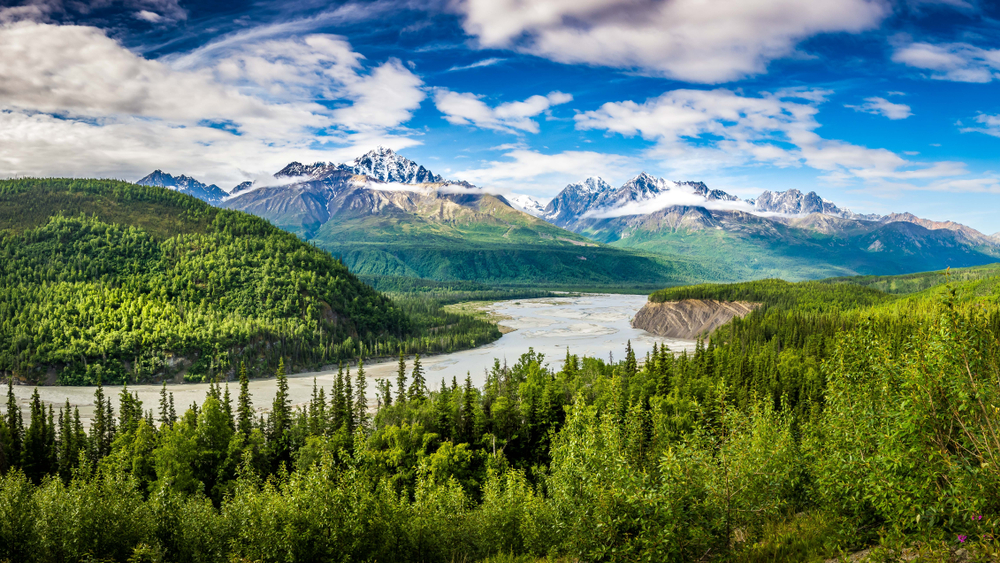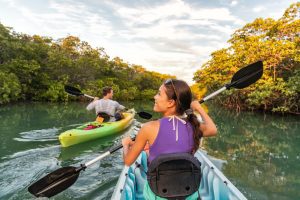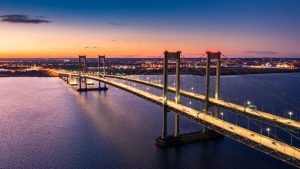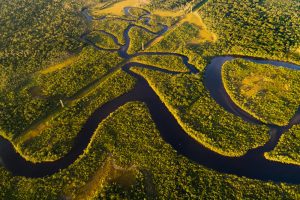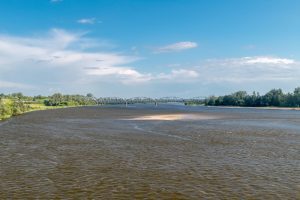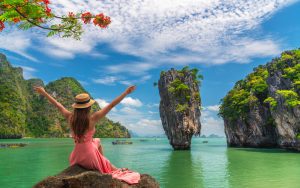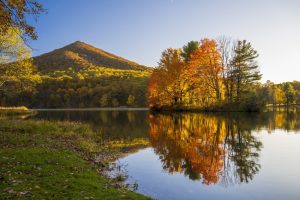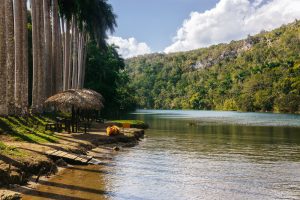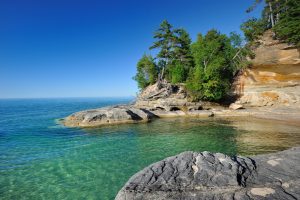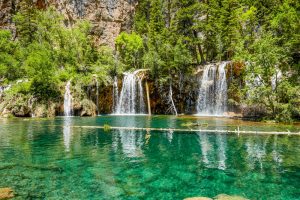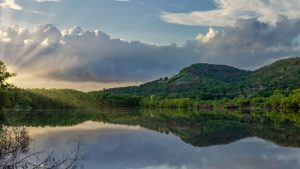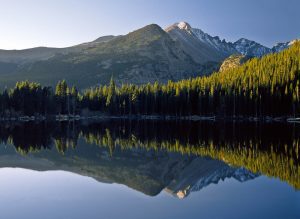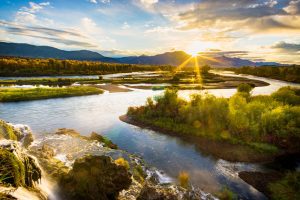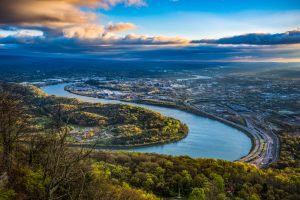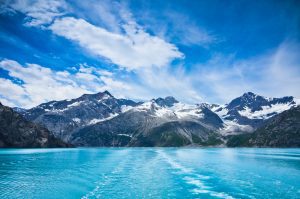Oliver Wendell Holmes once said that a river is more than an amenity and is a treasure.
Hence, a state with multiple rivers is rich in resources since it can derive the benefits of the water system, ranging from being a source of livelihood for locals to a tourist attraction.
Altogether, the United States has about 264,837 square miles of water, making up 7% of the country’s total area.
Many states have different water bodies, including lakes, rivers, and creeks, which may leave you wondering, “Which state has the most rivers?”
Alaska is the state with the most rivers in the US. It contains approximately 12,000 rivers and has the largest total water area of around 94,743 square miles.
The state also features roughly 3 million lakes bigger than 5 acres and multiple ponds and creeks. These numbers account for over 14% of Alaska’s total area.
Alaska is famous for its frozen landscape, with many people’s first thoughts about the state being snowy scenes. The glaciers play a vital role in the water system since the melting snow keeps the state’s rivers flowing.
Of course, rain also contributes to the feeding of Alaskan rivers.
So, what is there to know about the rivers in Alaska?
Read on to find out the major Alaskan rivers, their influence on the ecosystem, and possible activities on the waterways.
Table of Contents
Which are the main Alaskan rivers?
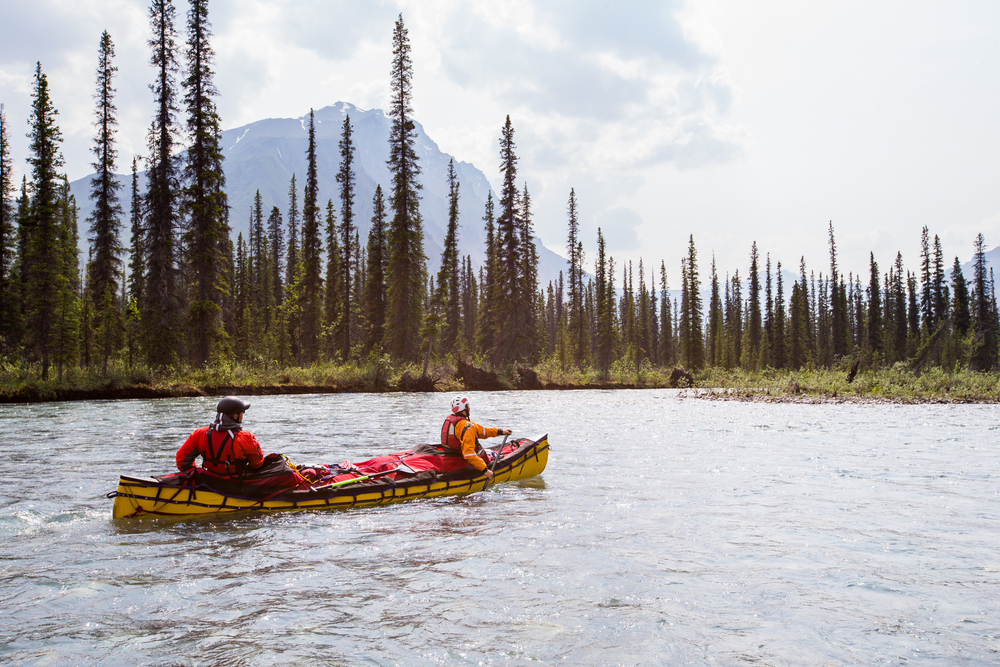
Alaska, the king of rivers in the United States, has over 365,000 miles of river. You can get about ten of them being at least 350-miles long.
The following are seven of Alaska’s rivers also found among the list of the 20 biggest in the United States:
1. Yukon River
The Yukon River is the fourth-largest in the United States, extending 580 miles in Canada and 1,400 miles in Alaska. It begins at Llewellyn Glacier in British Colombia, Canada, before flowing into the Bering Sea.
The river gets its name from Canada’s Yukon Territory, which it crosses before reaching Alaska.
It is the longest river in Alaska, and the Yukon was a common means of transportation during the Klondike Gold Rush. Currently, it is the venue for one of the longest salmon runs globally.
2. Koyukuk River
The Koyukuk is another sizeable river in Alaska that reaches up to 554 miles.
It is also one of the main waterways in the state, along with Yukon and Kuskokwim. The Koyukuk is one of the main Yukon River tributaries, rising from multiple headstreams on the southern slopes of the Endicott Mountains.
It runs from the central Brooks Range southwestward through Koyukuk National Wildlife Refuge and Gates of the Arctic National Park and Preserve, joining the Yukon near the Koyukuk village.
People discovered a placer deposit in the upper Koyukuk basin during the gold rush in the late 1890s.
Although people work the deposits near the settlements of Allakaket and Wiseman, they don’t have commercial significance.
Koyukuk River features continuous permafrost underneath that caused the 1994 flooding of the waterway, devastating various villages on its banks, such as Alatna and Allakaket.
3. Kuskokwim River
The Kuskokwim River is another recognizable Alaskan river, flowing up to 702 miles around Southwest Alaska. It is the ninth-largest river in the United States regarding discharge volume at its mouth.
The confluence of the North Fork Kuskokwim and the East Fork Kuskokwim create the Kuskokwim River.
It emerges from Kuskokwim Mountain in Alaska and runs to the Bering Sea and Kuskokwim Bay. This river is historically significant as a fishing and fur-trapping venue.
4. Porcupine River
The Porcupine River is the third-longest river in the state, stretching about 569 miles. It is also a tributary of the Yukon River, originating from the Ogilvie Mountains in Yukon, Canada.
It then courses through the Old Crow community and veers southwest into Alaska before turning into the larger waterway at Fort Yukon.
The river has excellent conditions for boating, making it a suitable spot for travel by kayak, canoe, or raft.
It is necessary to note that upriver winds can cause some challenges to rafters. You want to ensure you have skilled rafters when boating.
5. Tanana River
The Tanana River is roughly 584-miles long and connects with the Yukon River as a tributary. You can find its headwaters at the Chisan Rivers and Nabesna River confluence.
The Tanana River then courses along the northern slopes of the Alaska Range before emerging in Central Alaska into the Tanana Valley.
The river accumulates ice to an average thickness of 43-inch at Nenana during winter. As a result, the state has an annual fundraiser called the Nenana Ice Classic, where people estimate the time and date when the ice will melt.
6. Innoko River
The Innoko River in west-central Alaska extends up to approximately 500 miles and is the westernmost major tributary of the Yukon River.
It starts from the Kuskokwim Mountains wets of McGrath town and flows north and southwest before meeting the Yukon close to Holy Cross.
Prospectors went into the valley during the 1907 gold rush and set up multiple mining camps, including Poorman, Ophir, and Cripple.
However, the streams did not generate much alluvial gold, resulting in many abandoned settlements.
The Innoko River remains largely wilderness and courses through Innoko National Wildlife Refuge, where you can spot wildlife like moose, birds, and bears.
7. Colville River
The Colville River in northern Alaska flows to about 428 miles, making it the shortest of the seven main rivers in the state. It comes from a remote section of the DeLong Mountains at the western end of the Brooks Range.
The river flows north before turning east through the foothills on the range’s north side.
It then expands into wide tundra after receiving inflow from the tributaries descending from the middle Brooks Range. Colville is a major Arctic Coast river, draining into an isolated place of the tundra entirely above the Arctic Circle.
This location means you can find a frozen river for over half the year, with flooding taking place every spring.
The discovery of dinosaur fossils in Colville River’s cut banks makes it suitable for archeological interests. Its cliff banks are also the nesting spots for one of the largest Peregrine Falcon populations in North America.
Aside from these rivers listed above, you can also learn about 25 other rivers with wild and scenic designations via the United States National Wild and Scenic Rivers Act.
These rivers total over 3,000 miles and range from whitewater rapids to lazy rivers. In addition, these rivers receive special protection to preserve their conditions and keep them wild.
Some waterways with this designation include the Alagnak Wild River, Noatak River, Alatna River, Charley River, Chilikadrotna River, and the Koyukuk River’s North Fork.
How do rivers affect Alaska’s ecosystem?
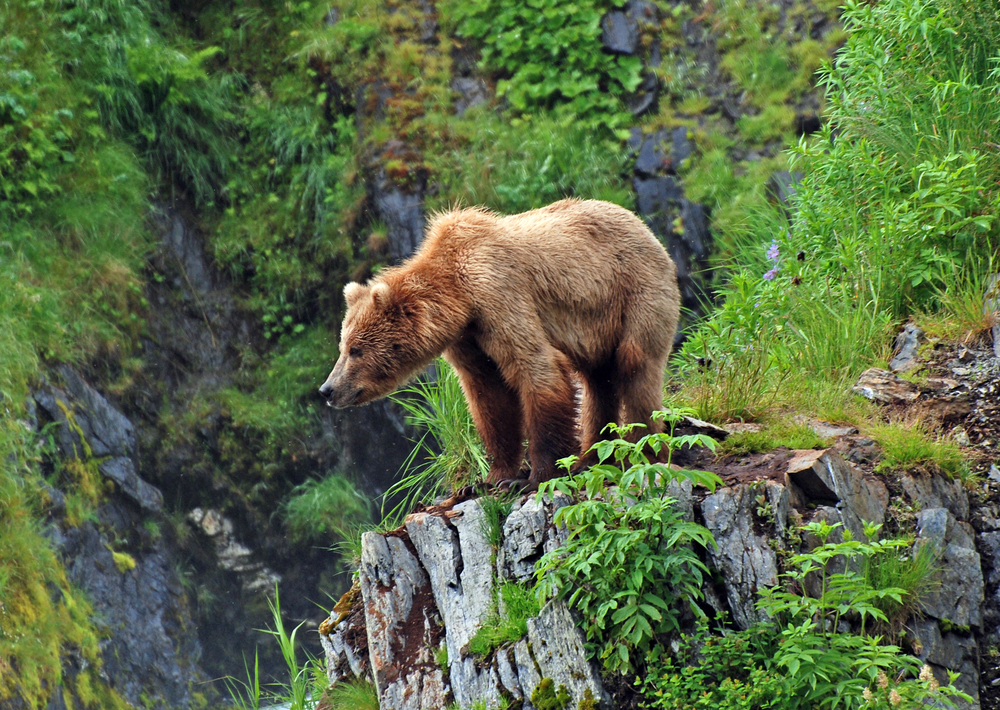
Rivers are an essential part of Alaska’s boreal forest ecosystem. These waterways offer habitat for birds and fish while simultaneously serving as travel corridors.
Furthermore, they form unique riparian habitats for terrestrial animals.
The Yukon and Kuskokwim Rivers experience annual migrations of salmon, bringing ocean nutrients into the interior waterways. This shift enriches riparian zones while feeding the surrounding humans, wolves, bears, and eagles.
Moreover, the lush riparian sections are critical to summer songbirds that feed on insects. These areas also sustain moose, snowshoe hares, and willow ptarmigans during the winter months.
Besides these, Alaskan rivers erode sediments on some parts of their banks as they flow across the landscape.
After this, they deposit the sediments somewhere else, with willows, herbaceous plants, and deciduous trees colonizing the resulting gravel bars and sand.
These riparian areas are also essential to numerous insect-eating songbirds during summer and herbivores like moose and willow ptarmigan in winter.
Can visitors enjoy Alaska’s rivers?
Looking at the significance of the rivers to the state’s ecosystem mentioned above, you can easily think the waterways are off-limits.
The good news is you can partake in various activities on the rivers without compromising the ecosystem’s balance. For this reason, the rivers in Alaska offer a quality tourist attraction to add unique fun and memories to your itinerary.
So, what activities can you do on the Alaskan rivers?
1. Use Them for Transportation
You can find around 15,000 miles of roads crossing Alaska, which is not much when considering the state’s size. Most Alaskan villages not situated near a major road are near a river.
Therefore, the over 360,000 miles of rivers and streams present the next best option for many people to move to various locations.
However, how do you travel during summer and winter on the rivers?
You can comfortably move by boat in summer since the rivers are free of ice. In contrast, you can snowshoe, ski, walk, or use drive dog teams to get across the frozen waters during winter.
In addition, you can use a snow machine to navigate the icy rivers safely.
Notably, some miners even rode bicycles on the frozen rivers to access the next gold strike during the early 1900s gold rushes.
You can also include quality water games in your summer travel itinerary, such as paddling through the busy Thunderstorm Creek to Kiligwa River route on the Colville River.
2. Enjoy Fishing
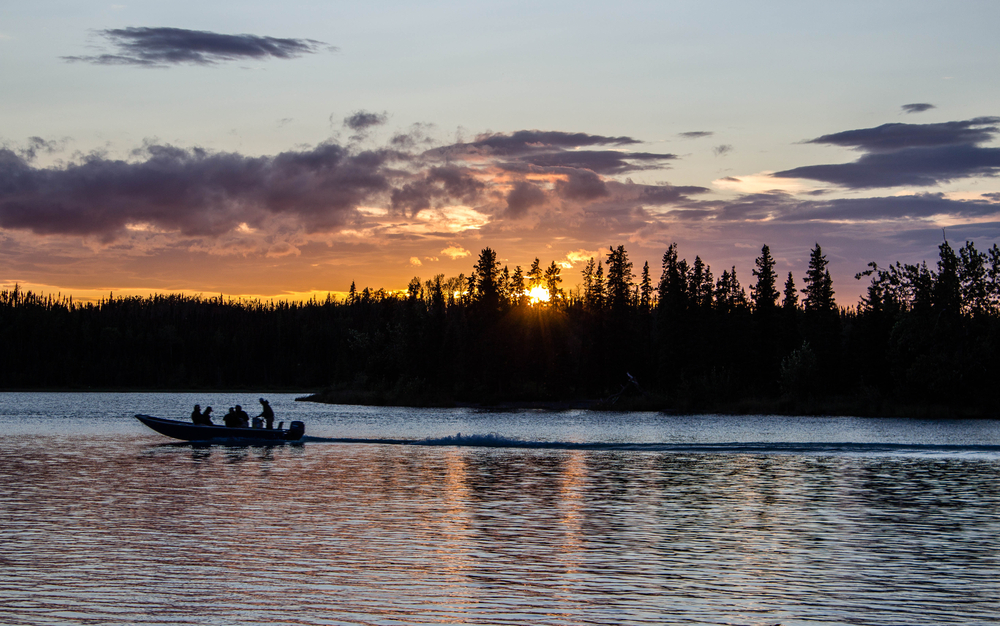
Alaska features some of the best fishing locations in the United States, such as the Kasilof River and Kenai River.
The Kenai River in south-central Alaska is the most famous fishing destination for king salmon and holds the record for the largest king salmon.
The record occurred in 1985, with the salmon weighing 97 lbs. You can also get trophy-size Dolly Varden and rainbow trout.
Kasilof River, also referred to as one of the best-kept fishing secrets in the state, offers another excellent fishing site. The Kenai River often overshadows its popularity.
It sits a few minutes from Kenai and is famous for its king salmon population, with catches typically ranging from 20 to 40 lbs.
3. Appreciate the Lovely Vistas
The Alaskan rivers form beautiful sceneries as they meander through the landscapes, enabling you to enjoy lovely vistas and appreciate the wonders of nature.
For instance, the Noatak is the state’s longest wild and scenic river. It runs around 420 miles to its mouth in the Chukchin Sea from its headwaters in Mount Igikpak.
You can find it in the Arctic National Park and Preserve, where you can see beautiful mountain sceneries surrounding the river. Yukon River also offers remarkable views of lush green vegetation to satisfy nature lovers.
4. Watch Wildlife
You can begin watching the exciting salmon runs in clear waters of the Russian River and Kenai River. The crystal-clear Russian River has two world-famous sockeye salmon runs in the mid-June and July to August seasons.
You can hike to the deck at the Russian River Falls and observe the fish leaping up a cataract in a gorge.
Generally, spring provides some of the best wildlife viewing chances before the trees leaf out, allowing you to see waterfowl, shorebirds, and ptarmigan.
As spring progresses, you can look at animals drawn by the fresh vegetation, including black bears, Dall sheep, and mountain goats. Bird lovers can watch songbirds arriving and seabirds gathering at southcentral nesting colonies.
The ice pack recedes during spring, making it the perfect time to spot bowhead whales, seals, and walrus.
Summer lets you see seabird colonies and bears along the banks searching for salmon. You can look at moose, muskoxen, caribou, and goats in open areas along the rivers during fall.
Winter lets you take amazing pictures of the largest bald eagle concentration globally along the Chilkat River.
Overall, many rivers include a course through a national refuge or reserve, offering convenient access for closer wildlife watching.
Alaska is home to the most rivers in the United States, with the waterways offering a convenient balance between maintaining the ecosystem and attracting tourists.
A tour along the major rivers in the state presents quality opportunities for different water activities.
Nature and animal lovers can appreciate the fauna and flora around the rivers. Active visitors can partake in exciting boating, kayaking, and canoeing trips or visit the famous fishing spots for a king salmon.
This versatility offers something for everyone, allowing you to appreciate the Alaskan river system and the history and nature that surround them.

